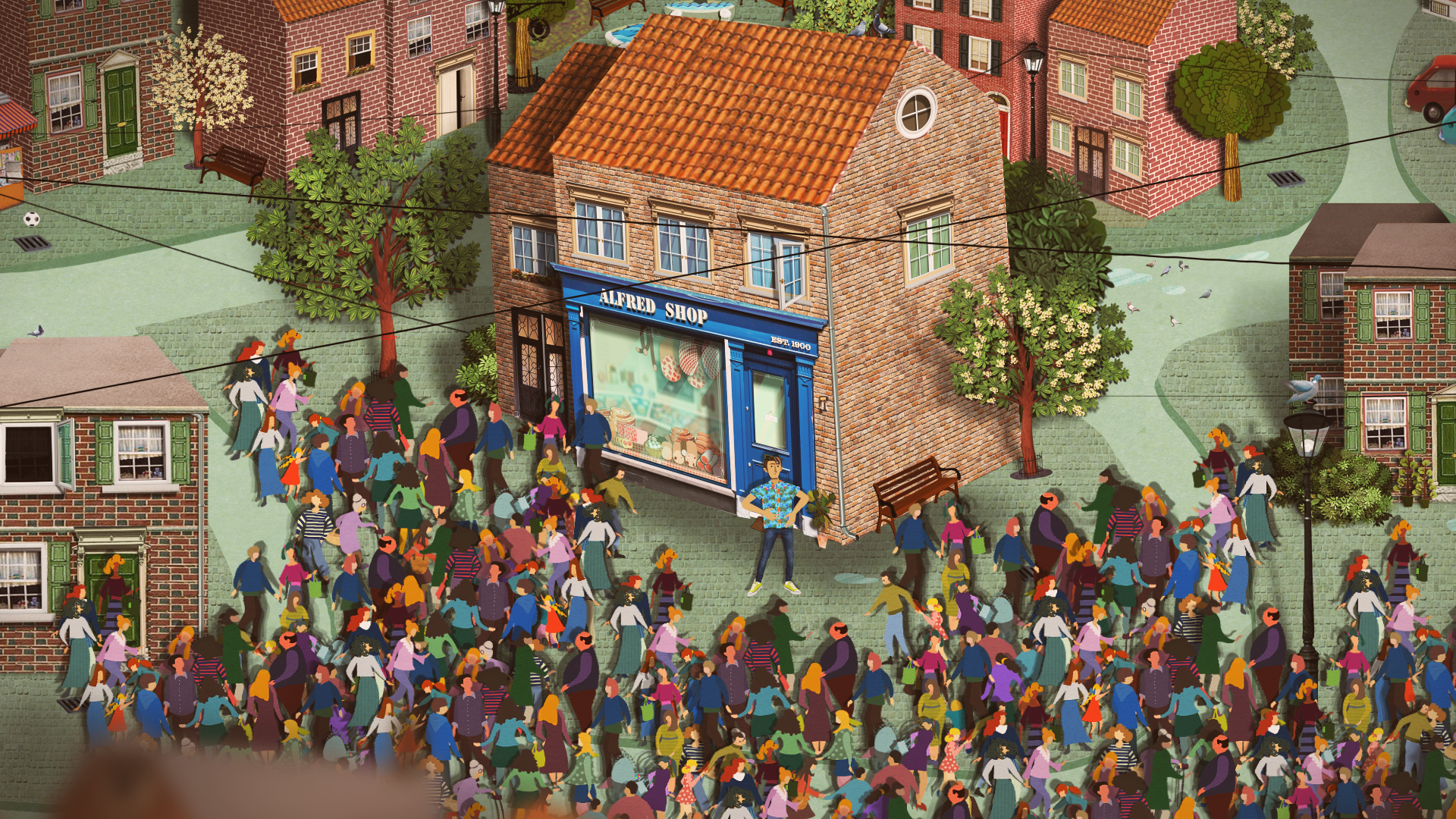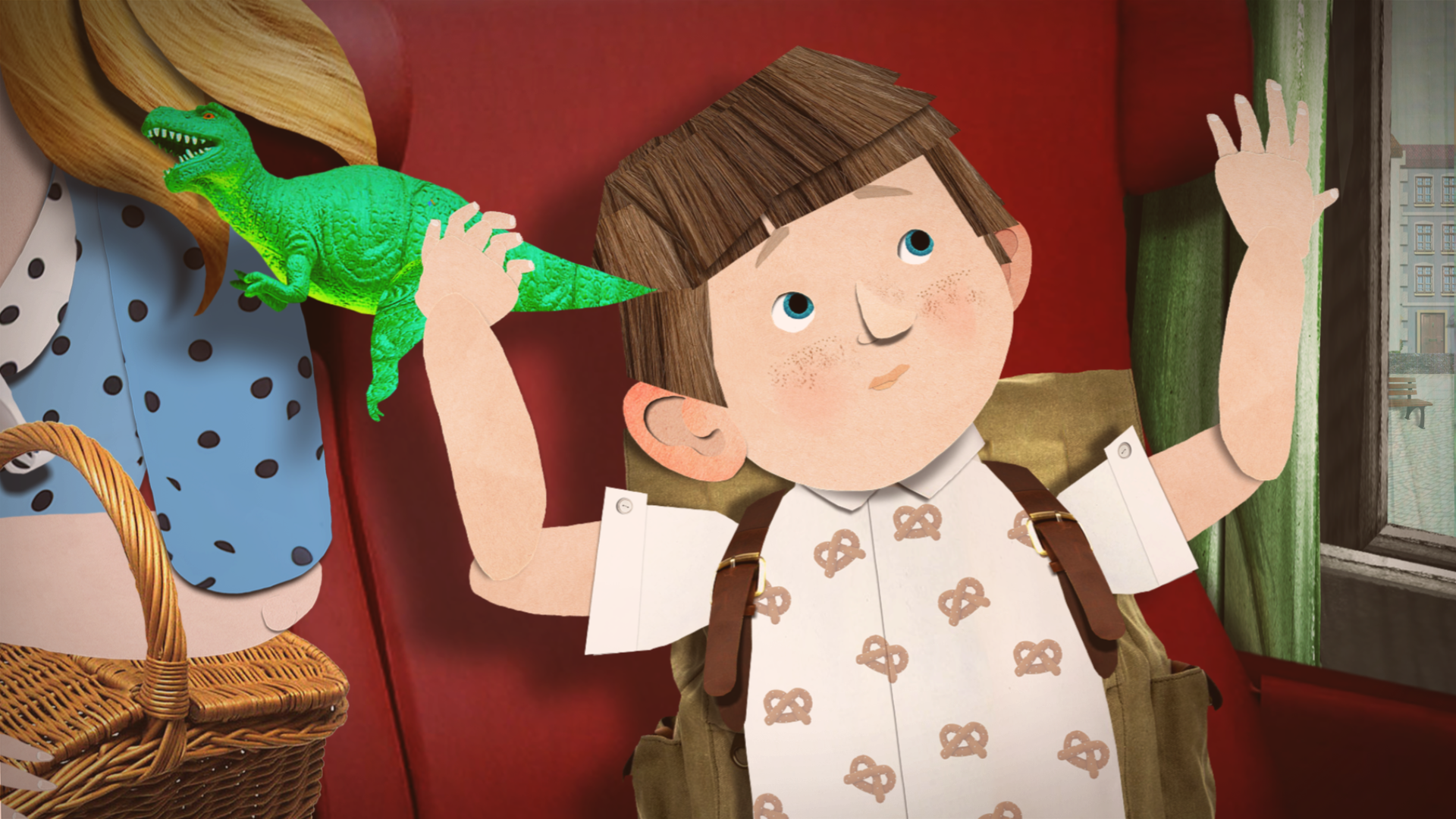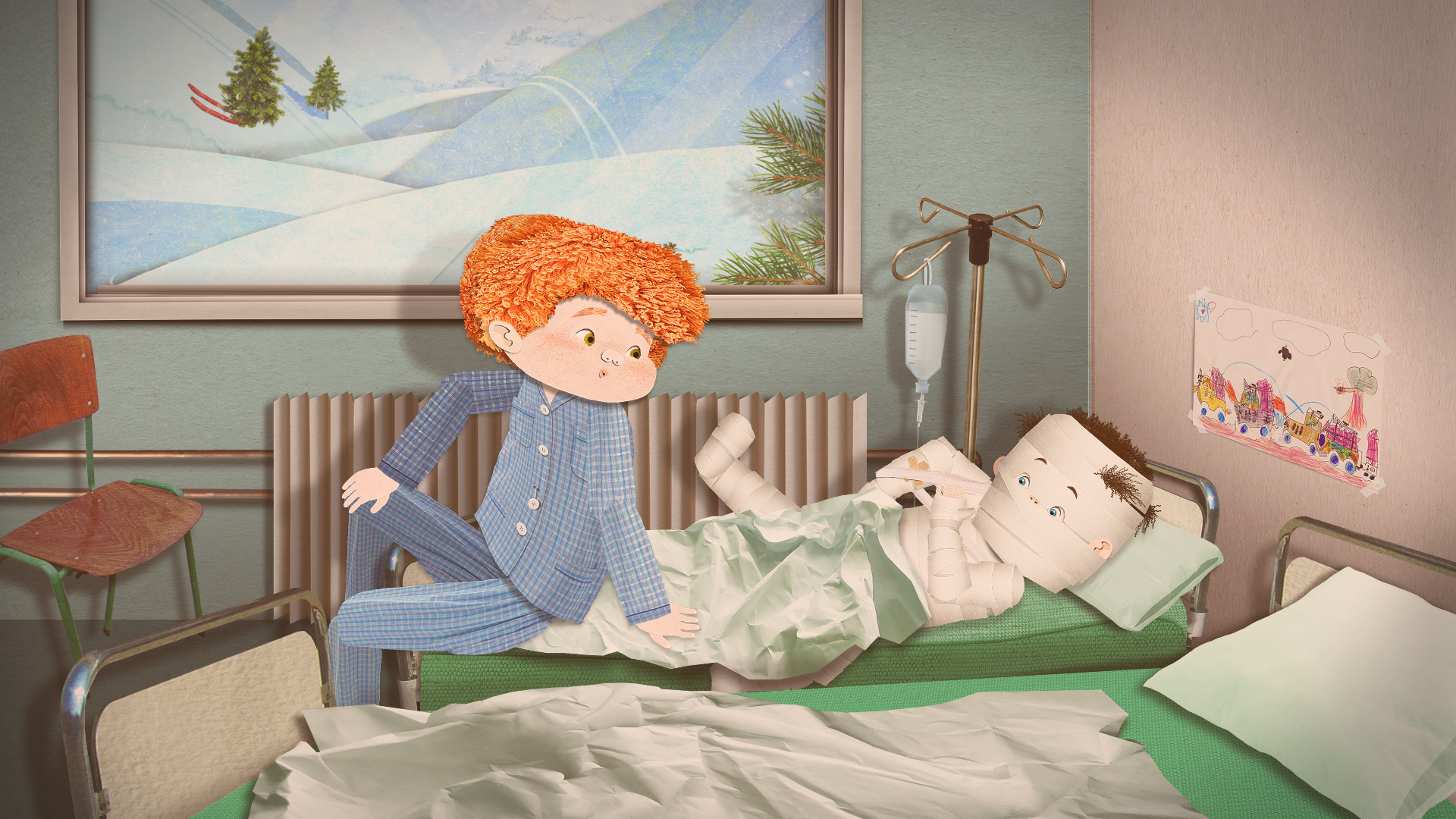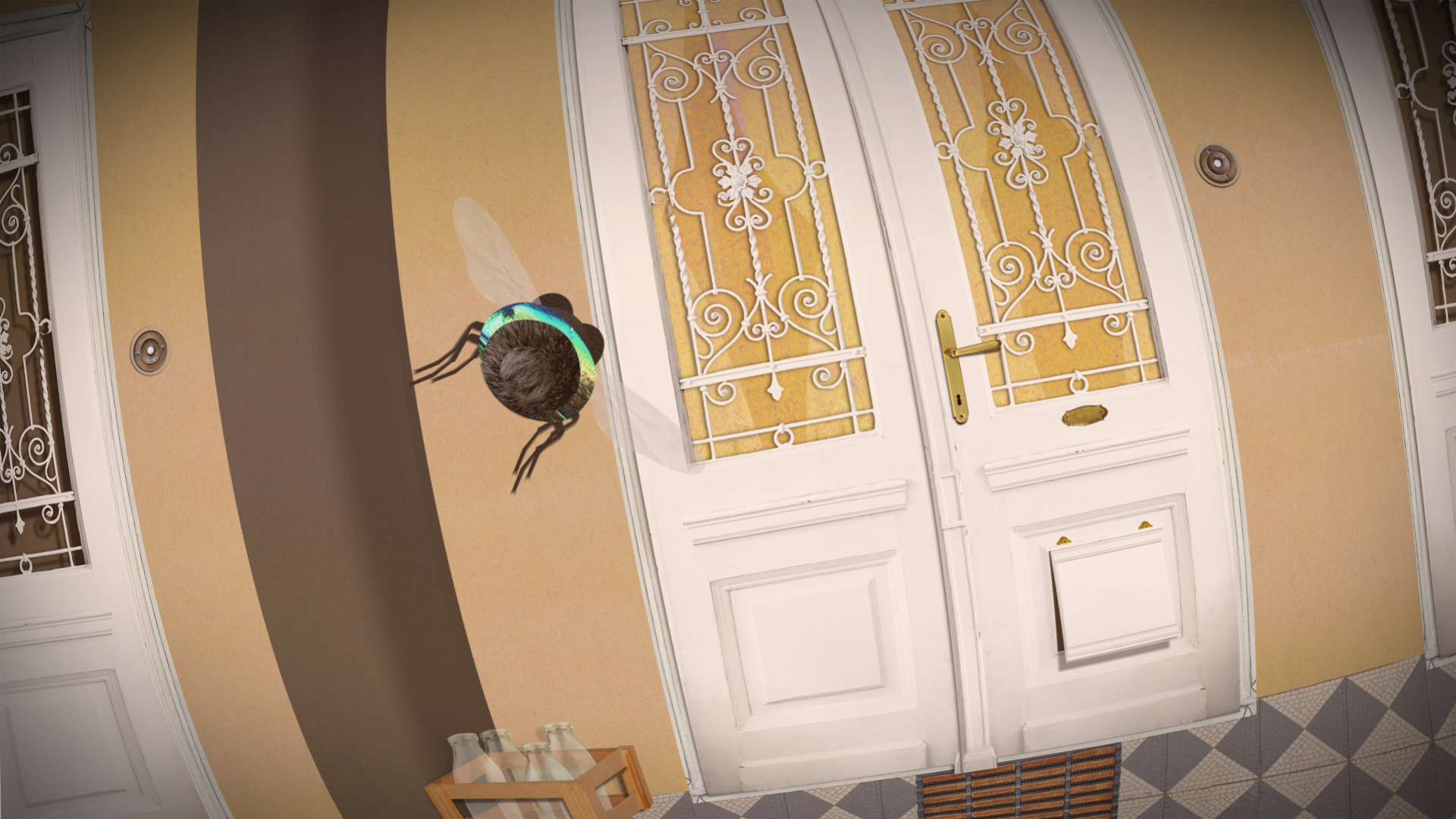Animation film director Kati Glaser creates an inimitable universe with her Urban Legends series: everything possible— and impossible—can happen in this colorful world in only 3 minutes. Fantastic stories from Budapest to the Amazon, where trees being plucked out by eyebrow tweezers is nothing but ordinary. 26 episodes of childish fantasy, even grabbing the attention of adults.
Kati Glaser became popular with her diploma movie titled FIN: the animated short film made in 2008 was screened at many international festivals and in 2011 it also won the main prize of KAFF (Kecskemét Animation Film Festival). The main motif of the nearly 10-minute-long film is a certain red thread that “travels” across the globe—sometimes it twirls on the dunes of a desert, at other times it stretches between two blocks like a clothesline, and at yet another times little girls are using it for skipping rope. We can call this red thread interweaving the universe the thread of life or fate: an archetypical symbol that connects seemingly unrelated things and phenomenon.
FIN is actually about life with a capital L, without any unnecessary frills or pathos: the red thread becomes the prop and scenery of sometimes amusing, at other times grotesque or even sad scenes. Something similar yet utterly different is happening in the case of the Urban Legends, too—an animated series that was originally intended for children, but has also become a favorite of grandmas.
The Urban Legends is a collection of fantastic stories: it is an essence of childish fantasy where anything can happen and no one is surprised. Two seasons have been released so far, with a total of 26 episodes—every episode is available on the YouTube channel of the manufacturer, Kecskemétfilm, dedicated for children.
The Macskássy and Dargay animation calls provided a sufficient background for Kati Glaser and her team to create the seasons consisting of 13 episodes each as well as to showcase the potentials of classic storytelling through each story. They chose the technique of digital papercut animation, which is an immensely technicist and perfectionist genre according to Kati, at the same time this technique is what gives the very many layers of the film literally.

It will remind many of us of the famous Hungarian cartoon children’s television show Frakk, a macskák réme, but Kati mentions another prominent animation director, Sándor Reisenbüchler, who made countless films with the technique of papercut animation. While decades ago, the collage-like compositions came to life on a light table, today these types of animations, including Urban Legends, are mainly made with a computer.
The genre is very close to Kati because it allows her to show many layers and textures to the spectator and thus the story can become more exciting visually, too. The digital light table also offers countless possibilities for experimenting: there are things the creators draw themselves, but they also incorporate other media, including the details of paintings, graphics and archive photos. In the episode titled Hysteria, the paintings of the Hungarian National Gallery come to life—according to the narrator, Mihály Munkácsy’s Yawning Apprentice is a true depiction of the feeling of stepping on a LEGO block—while in another episode about felting, Van Gogh‘s room in Arles serves as the background, with the mandatory sunflowers, of course.

Kati can imagine and convey her stories to the audience vividly with the technique of digital papercut animation: according to her, in addition to the plot, portraying the tiny details that are determining for many of us is just as important to the story, and these details also serve the purpose of creating a memorable atmosphere. No matter how absurd a story may seem in Urban Legends, by incorporating certain key objects that look familiar to many of us and that determine our collective identity, it becomes believable and loveable and somehow our own in an instant.
Kids mainly focus on the plot, they laugh a lot, while the adult audience, provided they are watchful enough, can discover iconic objects such as the Pepita record or the Pille chair, but the famous “miskakancsó”, the Monchhichi figure or the pine-shaped Wunderbaum car air freshener also appear in some episodes. Kati says Urban Legends is a little bit like eating sour candy: it is sweet and sour all at once, it gives us a sour face but makes us smile at the same time.

The mind behind the fantastic stories is Kati, and we were curious to know where she turns for inspiration. “I am very reserved, this is why I make films,” she says, then adds that she used to be a competitive swimmer from the age of 3 and somehow the narrator’s voice gained momentum in her during the time spent in the pool. The time spent at her grandparents, who even had a small vegetable garden, made a great influence on her: she remembers what it felt like to dig in pebbles and what the texture of the salami was like when she was little.

She says these mainly tactile memories are all under her skin and the ideas for each episode spring out from these and from the eventful present, which are then turned into a synopsis, then into an animatic serving as the visual draft, and slowly but steadily the film reaches its final format. In addition, the world literature she read in her adolescent years—Márquez, Kundera, Updike, Hrabal, Capote—also contributed to the unique lens through which she sees and shows her stories.

Kati has been working with a permanent team for years, who, in her words, “let me play, but sometimes remind me of the rules.” Her co-creators help give a structure to her absurd ideas, but at the same time they also give room to her “creative floating”. In the Urban Legends series, she wants to tell stories that will never wear out yet are not silly; stories that can be loveable and entertaining for both kids and adults. Her permanent team includes Rita Domonyi (dramaturge), Bogi Udvardy (scenic design), Judit Czakó (editor), Jozsó Simon (animator, compositor), Csaba Kalotás and Dávid Hegyi(music)—many of whom also worked on her 2011 short film My Three Grandmas.
The series is produced in Pannónia Filmstúdió where Kati, Bogi and Jozsó rent an office via Kecskemétfilm and the editor and the dramaturge also join them from time to time, if necessary, while the animators work remotely. They are producing several episodes simultaneously, and five or six episodes are made within a few months.
Seeing the short and busy episodes, adult viewers are caught by some sort of tingly feeling of nostalgia, while the fast-paced opening credits is an audiovisual shock in itself, in the best possible sense. Kati asked composer Csaba Kalotás to create a melody that sounds familiar to all without making it too mainstream. Csabi turned to the great Hungarian classics for inspiration (Frakk, a macskák réme, Dr. Bubó, Vízipók-csodapók), and rolled them into one to make the final version.

The incredible stories are usually narrated by kids or chatty grandmas: Kati says everything sounds much more harmless if told by the former, and the grandmas are actual oracles (as Kati likes to call them) who know everything about life and so we should listen to what they have to say. It was also important in terms of dubbing that the audience meet familiar voices: the episodes were dubbed by Gábor Csőre, Éva Bata, Viktor Klem and Eszter Bánfalvi, amongst many others. In the case of dubbers who also work on commercials, Kati used an odd technique: to soften kids’ mannered tone, she asked them to eat something while dubbing, as it is harder to focus on perfect intonation while having your mouth full, and in the case of Urban Legends, this kind of mannerism wouldn’t have benefited the story coming to life on the screen.

Urban Legends is full of visual gags and movie references—we love these the most. The miniature chihuahuas are the size of fleas and the line of chestnut trees is cut down with giant scissors. In the episode titled Family Inheritance, there’s a hint at Ferenc Rófusz‘s Oscar-winning animation The Fly, but we can also see the opening credits of the famous Hungarian TV series Szomszédok, some scenes from Jurassic Park, and if all this is not enough, detective Columbo wearing his mandatory coat also appears on the screen.

The audience could already see the 3-minute episodes of the series on television, but fundamentally this duration was not designed for TV programming: the episodes come to an end way too fast to let us come to ourselves. According to Kati’s plans, the animated feature film gluing the episodes of the series will debut this year, where a chatty girl discovers the stories beneath the photos seen in the family photo album.
So the red thread seen in FIN actually returns in one of the episodes of Urban Legends, too, but we are not going to tell you in exactly which episode, and neither will we tell you in which episode a child of a forester and a beautician plucks out bare trees with an eyebrow tweezer, or what could be the reason why there are waterproof watches next to the chicken parts in the butcher’s block, on sale for a discounted price. If you don’t believe us, see for yourself!

Cabin fastened to a pine tree | Helen & Hard

Vibrantly natural | O!Meega










